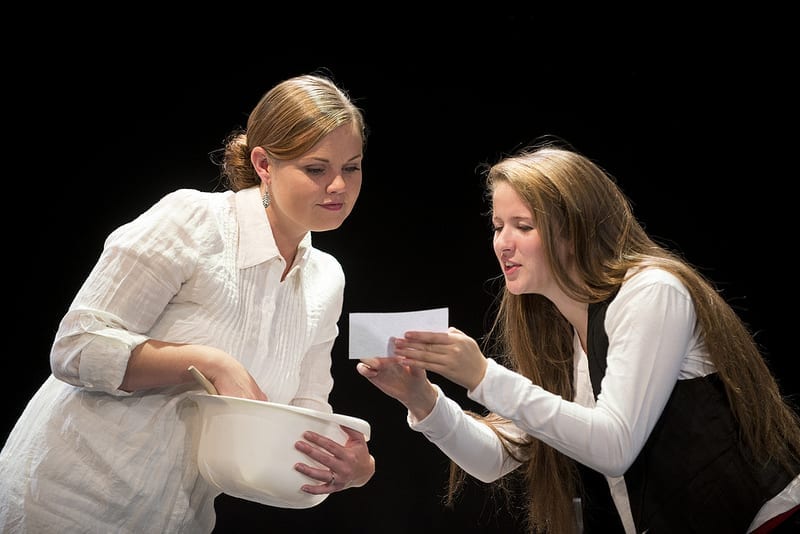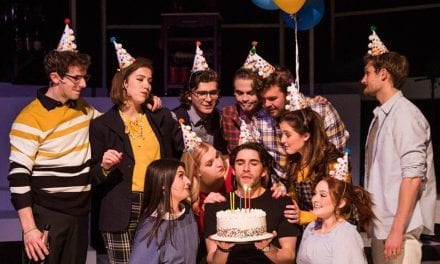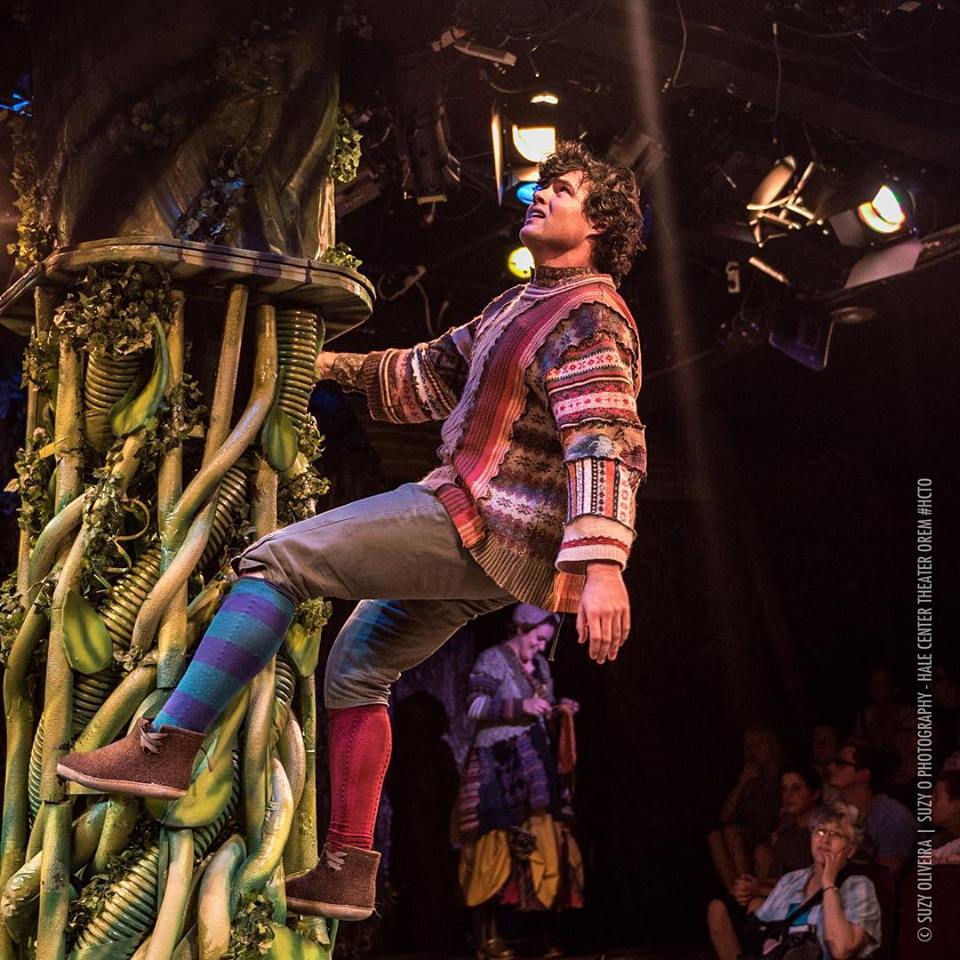CEDAR CITY — I couldn’t be more pleased to begin our second annual trip to the Utah Shakespeare Festival with Tennessee Williams’s The Glass Menagerie. My first experience with the play was in high school. We all had to choose from a predetermined reading list a book on which to present to the class. I thought I had a leg up on my classmates because I’d seen how thin The Glass Menagerie sat in comparison to the other texts; so of course, I immediately selected it as my homework assignment.
What started out as a decision of scholarly laziness has resulted in a sweet love for this great American play. It has been thrilling this past year to see productions of the script first, by Mortal Fools Theatre Project last fall, and then at The Grand Theatre this spring. This production at Utah Shakes took me a bit further. Simply put, it’s definitely worth seeing. Not so simply put, it’s a beautiful production that both embraces the simplicity of Williams’ script and then attempts to take it deeper. However, I’m not sure that they wholly achieve the latter goal.
Tom, based on Williams himself, introduces the characters of his memory play. Amanda Wingfield, Tom’s mother is quick to recollect her days as a young, Southern belle; Laura, his slightly crippled sister has a very tender self image; Tom, himself, is tired of watching the exciting lives that people have in the movies and dreams of more adventure than his job at the shoe factory; and Jim O’Conner, a co-worker at the factory who visits as the unknowing “gentleman caller.” The fifth character in the play is seen only in the picture frame at the top of the stage—Mr. Wingfield, the absent father described as a “telephone man that fell in love with long distances.”
Ben Jacoby gives a solid performance as Tom Wingfield. His southern cadence did not leave the monologues feeling labored. On the contrary, it was very immediate, sincere, but more importantly there was discovery. Director J. R. Sullivan quickly introduces Tom as the director of the play’s action by allowing Tom to cue a light change and prompt the introduction of music. The device is used throughout the beginning, but it changed towards the end.
It’s a very revealing choice. We get a glimpse of Tom’s humor later on as Amanda awaits an apology and he cues a few notes from “Ave Maria” to play in the background. On a whole, it brings a lovely layer to Tom’s character that I haven’t seen so developed in other productions, but at the same time I wondered if the choice could have been explored a bit more. Are there additional moments where Tom might step out from his role in the play and reclaims his role as the director of the action? I love how we, the audience, forget ourselves and become immersed in the action of the play, but I also cherish those moments we’re drawn out and reminded that we’re being told this story by Tom.
Upon first glance of designer Jo Winiarski’s set my attention shifted. The seemingly straightforward apartment furnished with the soft curves one would expect from a Southern home is framed by the hard angles of a brick tenement building, supported by squares of fire escape leading upwards. The entire set, however, is tilted stage right so that one corner peeks ever so slightly off the stage and into the audience. Upon that corner sits a glass menagerie. It’s wonderful when designer’s are able to communicate story, themes, and motifs to the audience before the actors set foot on stage. From the set design, Winiarski immediately tells us of contrasts in economy vs. Amanda’s upbringing, the angled perspective of the storytelling, and the precariously placed glass menagerie as a revealing symbol for the play.
If there is one piece of advice I can pass along to fellow patrons it’s this: If you don’t like a performance, ask yourself, “Why?” Then, after you figure that out, ask yourself, “Well, why did they choose to do it this way?” I like to assume that everything that happens on the stage is the result of a conscious decision. If I then try to figure out why they made that choice, I often end up appreciating it; not always, but often. That’s what happened with me and Demetra Pittman’s performance of Amanda Wingfield.
Amanda has always seemed like a force to be reckoned with. I see her as the wind: coaxing and gentle as the summer breeze, but capable of sharp force that can chill you if needed. That duality is what has always intrigued be about her and her relationships with Tom and Laura. Pittman’s performance caught me off guard in Act I. Her motivations were much more subtle than I anticipated. I didn’t see the hold she had on Tom and Laura because I didn’t see the passive-aggressive, slightly manipulative Southern belle I was accustomed to. But once we stepped into Act II, Pittman’s performance soared. Amanda as a hostess is queen and my heart broke when she discovered all her work was for naught. Right there was when I saw how effective the contrasts were between Amanda in Act I and Act II.
Sara J. Griffin is beautiful as Laura. Her scene with the Gentleman Caller (Jeb Burris) was so tender and sincere. The scene itself is one of the most lovely in American theatre. Griffin and Burris carry it well. I appreciated Laura’s journey from the moment Jim enters, to their candle-lit conversation, to saying goodbye. Burris also brought to light a few aspects of Jim I hadn’t seen before. I finally saw hints of this gentleman that tires when a situation loses it’s flavor.
As a company, there were a few scenes where the acting didn’t seem to connect: Amanda’s conversation with Tom (the “I’m bringing a gentleman caller” scene) and Laura’s confession to Amanda (“You did all this to deceive me?”). The flow was a tad disjointed; they didn’t react well with each other; each of the actors stood on their own as opposed to acting through each other. However, these moments were infrequent, and overall, I was so pleased by the performance.
Sullivan makes some interesting choices with sound designer Joe Payne and lighting designer Jaymi Lee Smith regarding the memory motif. As mentioned, Tom prompts and/or comments on the use of music and light to accent this as a memory play throughout. But Sullivan and his team take that level of memory one step deeper. Not only are we living Tom’s memory, but as Amanda and Laura share stories, the lights and sound underscore them as well. For example, when Laura tells the story of Blue Roses, she is immediately backlit with blue and we hear young Jim O’Connor singing. I don’t think that this choice works because in the majority of the play the artistic lighting and music occurs when prompted by Tom. Now, there are moments when he prompts it consciously (the “Ave Maria” example), and there are moments when it happens subconsciously (the violin in the beginning) and that makes sense, because this play is his memory we’re seeing. But when the elements are prompted by another character, it usurps Tom’s role a little. I love the idea of Tom’s control over the memory, and finding moments where the memory has control over him. However, when those moments of memory within a memory occur and Tom is nowhere to be seen, they just don’t fit.
The simple beauty of Williams’ script holds me every time. It’s cathartic and to be perfectly honest, I leave the theater feeling refreshed. This truly is one of the great American plays. I strongly encourage you to see this production.
Update: Read UTBA’s interview of the star of The Glass Menagerie, Ben Jacoby. We also invite you to watch UTBA’s video interview of the Utah Shakespeare Festival’s executive director, R. Scott Phillips.
The Utah Shakespeare Festival’s production of The Glass Menagerie plays thru September 3, 2011, in the Randall L. Jones Theatre located on the campus of Southern Utah University at Center Street and 300 West in Cedar City, UT. Tickets are $30-71. Showtimes vary so please consult their calendar at Bard.org.





